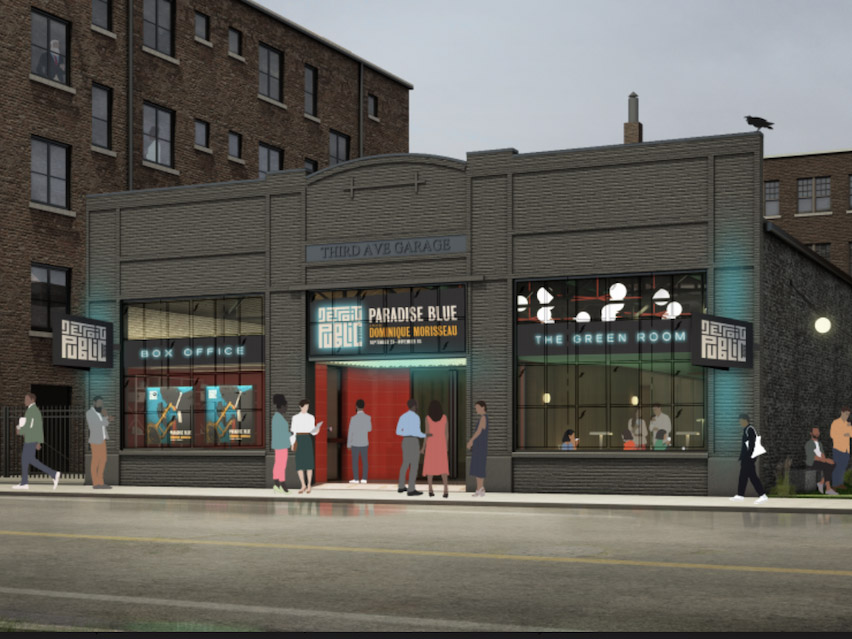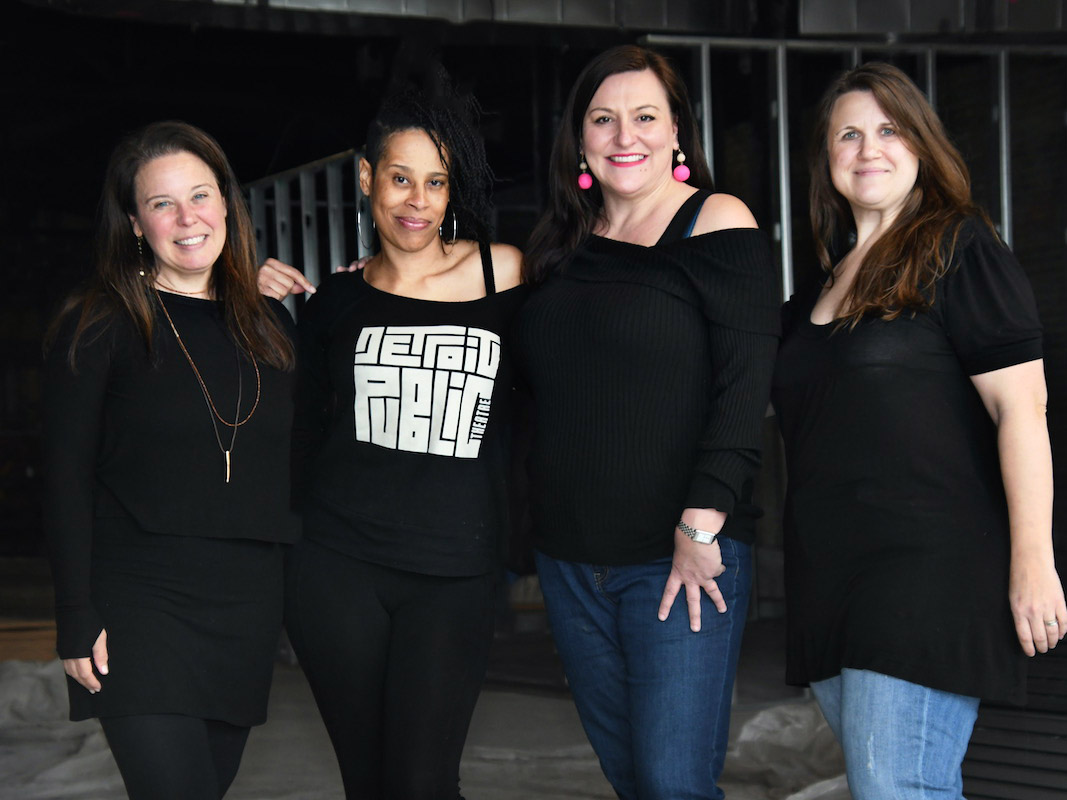Detroit Public Theatre prepares to open ‘the people’s theater’
EDITOR’S NOTE: In keeping with Frame’s mission to cultivate and celebrate creative talent, Frame Stories occasionally spotlights content from other independent media organizations that are essential to documenting and preserving the work of this dynamic community. This month, we’ve partnered with Outlier Media, a Detroit-based service journalism organization that takes a resident-first approach, providing the information they need to create change in their own communities. Please consider supporting Outlier’s work with a donation, and read our Q&A about the power of pizza with Outlier Executive Director Candice Fortman.

Construction work was in high gear at a former Bays English muffin factory in Midtown in early May, with sparks flying inside the future home of Detroit Public Theatre. The company is preparing for the opening of its eighth season in September, the first time they will be in their own space rather than putting on shows at other venues.
The airy theater will hold a box office, green rooms, bar and loft offices. For now, it is mostly metal beams, drop cloths and vision; the available work spaces include a folding table covered in blueprints and the sidewalk out front. Crews are installing HVAC, electrical, and plumbing; painting and finishing the framing.
Detroit Public Theatre launched in 2015, using space at the Max M. and Marjorie S. Fisher Music Center, home of the Detroit Symphony Orchestra, to stage more than a dozen performances. Last summer, the organization signed a long-term lease for their new home on Third Street, and the team is growing to 10 full-time staff members. Courtney Burkett, Sarah Clare Corporandy and Sarah Winkler are artistic directors. In 2020, DPT added founding board member, playwright, MacArthur “genius grant” recipient, and native Detroiter Dominique Morisseau to its leadership team as executive artistic producer.
“Dominique was here just a couple days ago and said, ‘It’s the people’s theater!’” said Burkett. “So that’s what we’re hoping to build.”

Reviving “Detroit ‘67,” an “urgent” play for the city
DPT staged Morisseau’s play “Detroit ‘67” in its first season, then revived it in 2017 and 2018 for performances around the metro area, with free shows at parks, high schools and community centers.
“Detroit ‘67,” which debuted off Broadway in 2013, is part of Morisseau’s three-play cycle, “The Detroit Project.” First in the trilogy, the play focuses on two siblings hosting an after-hours party as the 1967 rebellion unfolds, a family drama that centers Black Detroiters’ experiences and and weaves in the structural inequities that shape their lives.
DPT opened its latest production of the play to close out its seventh season, popping up at the Charles H. Wright Museum of African American History with shows through June 5.
“There are a lot of theater companies that do ‘A Christmas Carol’ every year, or do ‘The Diary of Anne Frank’ every year, but ‘Detroit ‘67,’ producing that play – in Detroit, regularly – feels urgent and important for us,” Burkett said. “It’s an important conversation to keep having with our audience and with our community. And so that’s why we keep bringing it back. It’s not getting less relevant.”
The entire “Detroit ‘67” cast is Detroiters, either native Detroiters who have moved or current residents, Burkett said. DPT performers often come out of programs at the University of Michigan, Wayne State University, Cass Technical High School and Mosaic Youth Theatre of Detroit, where Burkett previously served as director of theater programs.
“I was training all these artists, these actors who were then going to study at Yale and at NYU and at U of M, and then there was no place for them to come home and work,” she said. “They were going and working at Baltimore Center Stage and working at the [Geffen Playhouse in Los Angeles] and all these different theaters, but there wasn’t a theater here that could give them travel, give them housing, and give them an equity contract and several weeks of work. So we’re excited to be able to be in a position to do that.”
A space designed to include the larger theater community
DPT’s new performance home will be a 250-seat black box theater with a simple, reconfigurable design. A black box-style space allows each play to have a unique set design, and a more “immersive” experience, Burkett said.
“Every play, we’re creating the world of the play, and so when [audience members] walk in, it’s a whole new experience,” she added. “The intimacy that the black box provides is part of what makes it great.”
The flexible space is also intended to be adaptable for performances by other troupes and artists. The DPT Residency Design Cohort – a collaborative between DPT, the Obsidian Theatre Festival/GhostLight Productions, InsideOut Literary Arts, A Host of People and Teen HYPE – will launch a subsidized residency program this summer. Applications are expected to open in late July.
The cohort’s aim is to design a program that “meets the needs of the community, that’s affordable,” said Corporandy, “so people can come in and use the space and have a box office and have brand new lighting equipment and sound equipment and video cameras” for their productions.
Detroit’s “theater community is diverse and supportive – and I think really adventurous,” she added. “When you look at the different kinds of theater people are producing, from puppet to ‘Devised’ to classical… it’s a broad range. And I think that’s important for the ecosystem, for us to have it all in the city.”
As part of their community engagement efforts, DPT has also formalized a “pick-your-price” initiative that allows people to pay what they can for tickets on the first two nights of each show.
“We have a lot of resources, and we want to make sure that those resources are being allocated in an equitable way, and that everyone is being welcome to create with us, and then certainly to come experience the work,” Burkett said. “Regardless of your ability to pay for a full-price ticket, these shows are for you, and you are welcome here.”
— By Kate Abbey-Lambertz




